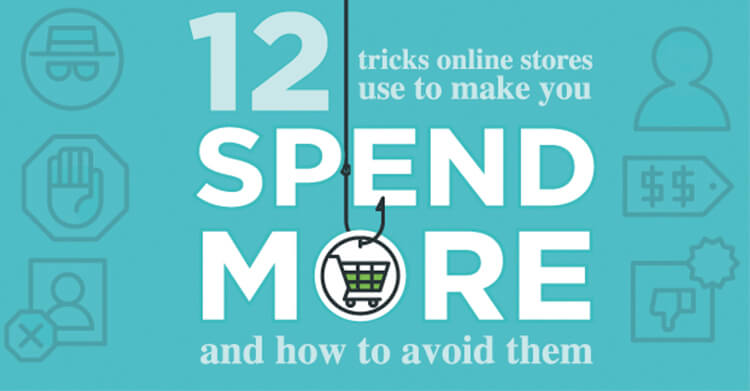12 Tricks Online Stores Use to Make You Spend More and How to Avoid Them
Disclaimer: This post was originally published on our UK partner’s site.
For centuries, traders and entrepreneurs have developed techniques to get their face-to-face customers spending more than intended, using a combination of science and human insight to get us reaching for our wallets. Only in the past couple of decades, however, have these techniques had the chance to truly evolve and become something new, thanks to the internet and the dawn of ‘neuromarketing’ — a scary term that sounds like it could have been invented by William Gibson. While neuromarketing can refer to any shopping experience, online merchants are perhaps exploiting it most fervently, with their websites and usability primed to get you shopping how they want you to shop.
Many such techniques will seem familiar once you read about them, but they’ve come to feel so natural – even helpful – when shopping online, that we rarely question them. One click shopping, for example, feels like a convenience but it makes for instinctive (or accidental) purchases that feel like a decidedly worse idea when your credit card bill arrives. If that’s a concern now, just wait until Amazon adds a one-click-purchase button to your refrigerator!
Another technology trick is the use of cookies, and not the delicious, crumbly kind. Every time you go online, your browser keeps a record of where you’ve been and what products you’ve been looking at. Some websites are able to then put adverts in front of you for the items you’ve already talked yourself out of buying. It’s like getting home from the shops to find a billboard advertising that high-definition TV you nearly blew your wages on is now hanging in your front window. If you clear your browser history regularly, though, or only visit retail sites when in ‘incognito’ mode, you should steer clear of these temptations.
Wondering what other tricks online stores use? Check out the video below for 4 of the top reasons why you spend more online:
To learn about a few more crafty neuromarketing tricks – and how not to get sucked in – check out this new infographic, which explores some of the most prevalent ones. They’re not all as new-fangled as you’d think, but it still takes a vigilant mind to avoid supersizing their shop on the web.

Sources
Ash, T. 2014. 6 Neuromarketing Principles For Designing More Persuasive Websites. marketingland.com
Elliot, M. 2016. Shopping Online? 5 Ways You’re Tricked Into Spending More. cheatsheet.com
Gehl, D. Date unknown. 12 Ways to Increase Online Sales. entrepreneur.com
Lee, J. 2016. 7 Tricks That’ll Help You Waste Less Money Online. makeuseof.com
Mai, J. 2016. 12 sneaky ways online retailers get you to spend more. uk.businessinsider.com
Profis, S. 2012. Five ways to put a stop to online impulse shopping. cnet.com
Shopify. Date Unknown. View and sort products. shopify.com
Valterra, M. 2012. How Online Retailers Get You to Spend, and 5 Ways to Avoid This. forbes.com
Williams, G. 2013. How Online Retailers Get You to Spend More. money.usnews.com
William Gibson Books. 2016. Neuromancer. williamgibsonbooks.com
Evans, T. (2013). ‘My nephew bought a £500 trip to Nepal’. thisismoney.co.uk
Tuttle, B. (2014). Amazon Wants to Invade Your Home With Its One-Click Buying Button. time.com
Google (2016). Browse in private with incognito mode. google.com
Embed This Image On Your Site (copy code below):






